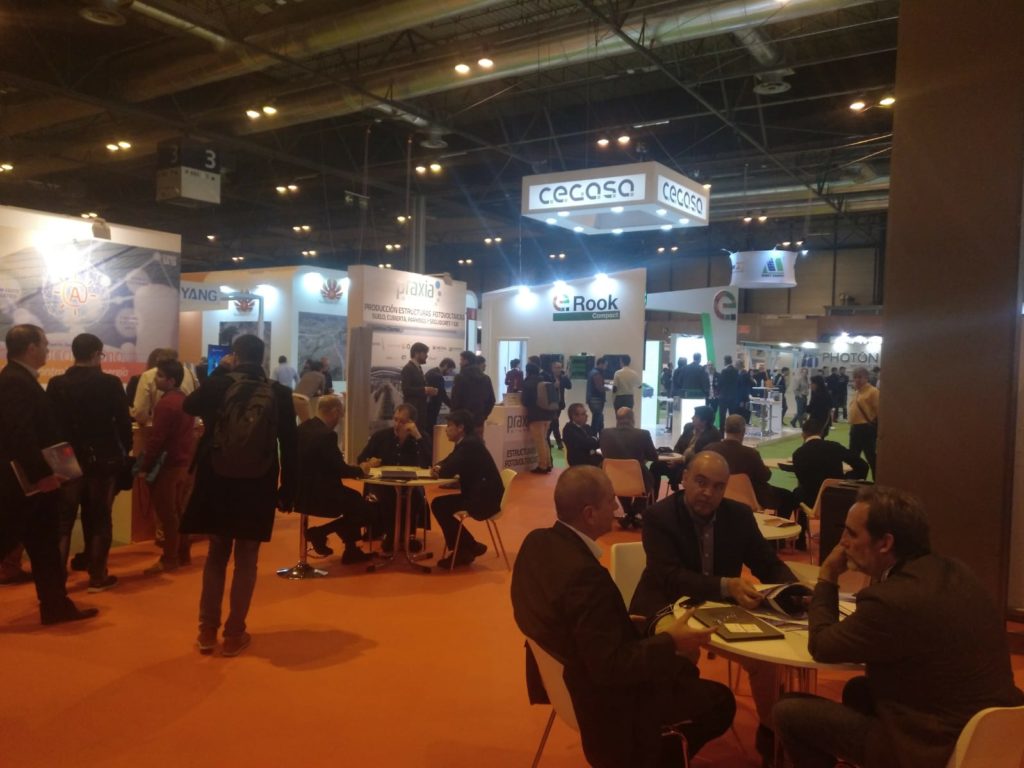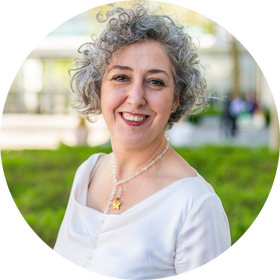From pv magazine Spain.
The 2019 edition of Spain’s international energy and environment fair Genera – held in Madrid last week – was a demonstration of contained optimism for the future of solar in the country, despite looming elections next month.
In conversation with pv magazine, several exhibitors attributed the diminished number of PV exhibitors to the pending election. The policy-dependent nature of solar power even as private PPAs are on the rise in Iberia led one delegate to announce: “Elections can turn Genera into a waste of money.”
However, other visitors to the show, which ran from Tuesday to Friday, said a focus on self-consumption of solar power may have excluded some of PV’s big players.
Interest is growing
Almost all the exhibitors focused on PV energy, to the point that Genera seemed a solar, rather than renewables show.
And with the number of exhibitors up 6.5% on last year – despite the election – it is the number of visitors to the show that has witnessed the most dramatic change. pv magazine is still awaiting an official number of attendees to be confirmed but waited in several long lines to talk to exhibitors.
“A very positive assessment brings back memories of 2006,” said Pablo Cuesta, CEO of Spanish mounting system manufacturer Praxia. “Genera is already a photovoltaic fair, which is the cheapest generation technology.”
Bigger crowds at the show have been mirrored by rising public interest, according to José Francés of Austrian inverter maker Fronius.
Andres Doebel, of Chinese solar manufacturer JA Solar, echoed that sentiment, adding: “Genera has not grown much in terms of surfaces, but in interest. Last year we came for the first time and we were the only module manufacturer. Now there are about five producers that present new technologies, and … the main topic is self-consumption.”
On the right path
José Mosquera, from German module and storage system provider Solarwatt, told pv magazine: “Many building companies are contemplating, and integrating, photovoltaics in buildings.” He said he had also seen strong interest at the Solarwatt stand from architects focusing on self-consumption.
For Eduardo de San Nicolás, from Spanish tracker company Soltec, Spanish solar is on the right trajectory. “If 2018 was the ‘something is going to happen’ fair, this year it is evident that it is already happening,” he said. “There is much more attention, more construction companies are coming, developers, people who want to know how the product works.”
The attendance of new participants was also noted by a representative of PV product distributor Suministros Orduña, who said: “The fair has attracted many small installers who want to start. Self-consumption has always existed.”
Carlos Martinez, of Chinese solar inverter and storage company Goodwe, confirmed that impression, and said: “The fair shows that in Spain there has always been a very consolidated industry and sector; the downside is that all kinds of companies, more and less prepared, reappear.”
Self-consumption
Popular content
With on-site power consumption the central theme of the fair, Spanish solar association the Unión Española Fotovoltaica (UNEF) predicted 15-20% of the country’s installed solar capacity in the years ahead will be for self-consumption. All the exhibitors approached by pv magazine agreed it is necessary to provide a legal framework so shared self-consumption can take off, and said the result of the elections will not dramatically change the landscape too much.
Ana Rodríguez, from the self-consumption section of Spanish renewable energy association APPA, said: “Proper regulation would benefit the execution deadlines of something that is inevitable. It doesn’t matter how long will it take, self-consumption in Spain is unstoppable.”
Goodwe’s Martinez agreed: “This has already taken off, and even the most retrograde political parties are now aligned with solar. It is a necessity and an opportunity. Spain has been a power in the sector and we can be … again.”
For José Donoso, director-general of UNEF, “the participation in the conference has been a good thermometer of interest” and the sheer volume of visitors bore out his statement with some stands impossible to get near.
‘We cannot go back’
Regarding the possibility of regulatory changes after next month’s vote, Donoso said “it is unthinkable to return to a previous scenario”, and added: “There are three shields that protect us: i) the European directive, ii) the competitiveness of the sector – as it is an increasingly cheaper technology it will be difficult to invest in other technologies, and iii) the great social support: society is no longer going to understand a step back.”
His positivity was shared by Solarwatt’s Mosquera, who said: “This is unstoppable. This year there have been many more people with more knowledge, and you start to value quality, [the lack of which has been] a big problem in this sector.” Asked how to survive on increasingly thin margins, he replied: “Everything indicates that prices will rise again, which we believe is positive for all.”
Fronius’ Francés confirmed the Spanish customer “is not as interested in a cheaper product but in a good pre and after-sales service”.
Jannis Drixler, of German PV distributor Krannich Solar, told pv magazine: “The battery market is taking off in Spain, one out of every four residential self-consumption facilities already uses batteries, mainly lithium batteries.”
Bifacial promise
As for the large plants, according to JA Solar’s Doebel: “It may be that Spain takes longer to adopt technologies such as bifacial or half cell, but we are convinced that it is the future and will be the way. In three to four years, the bifacial cell will be a standard worldwide, and suppliers this year want almost all half cells. The bifacial combination with half cell is the natural evolution that is to come.”
Soltec’s De San Nicolás said, in a resurgent Spanish market it is profitability that is sought, rather than savings. “Soltec has already more than 1 GW consolidated this year in bifacial,” he said, adding the technology is not ideal for all plants, and has not “taken off yet because you do not know how much more it is capable of generating and banks are skeptical. There is talk of 60% more generation under ideal conditions, and at least 30%.”
De San Nicolás said Soltec was making measurements in the field and would soon publish a white paper with the resulting data. In general in Spain, he added, “eight out of 10 new plants already include trackers”.
Although companies did not want to give specific data due to commercial confidentiality concerns, many of them told pv magazine they have this year doubled the financial performances recorded in 2018.
This content is protected by copyright and may not be reused. If you want to cooperate with us and would like to reuse some of our content, please contact: editors@pv-magazine.com.



By submitting this form you agree to pv magazine using your data for the purposes of publishing your comment.
Your personal data will only be disclosed or otherwise transmitted to third parties for the purposes of spam filtering or if this is necessary for technical maintenance of the website. Any other transfer to third parties will not take place unless this is justified on the basis of applicable data protection regulations or if pv magazine is legally obliged to do so.
You may revoke this consent at any time with effect for the future, in which case your personal data will be deleted immediately. Otherwise, your data will be deleted if pv magazine has processed your request or the purpose of data storage is fulfilled.
Further information on data privacy can be found in our Data Protection Policy.